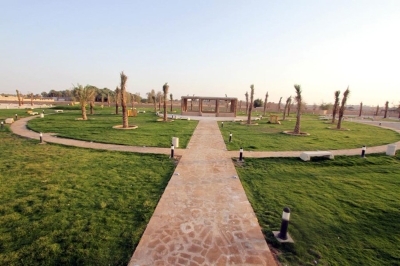
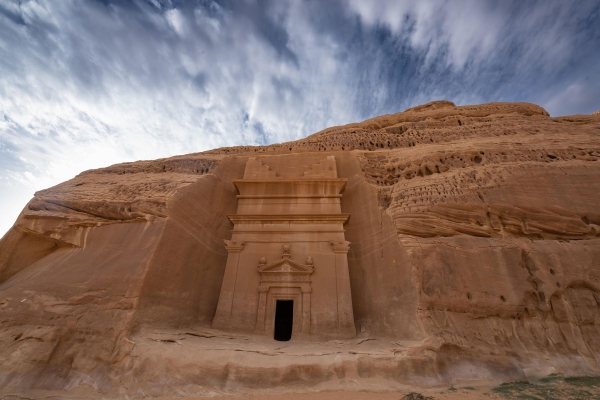
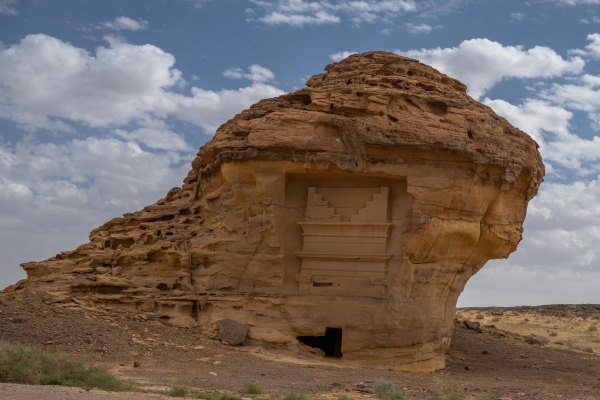
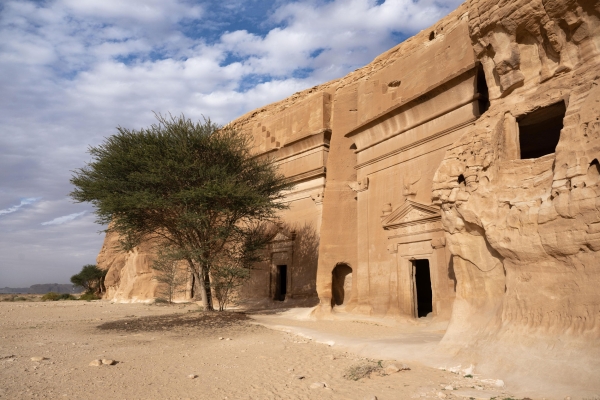
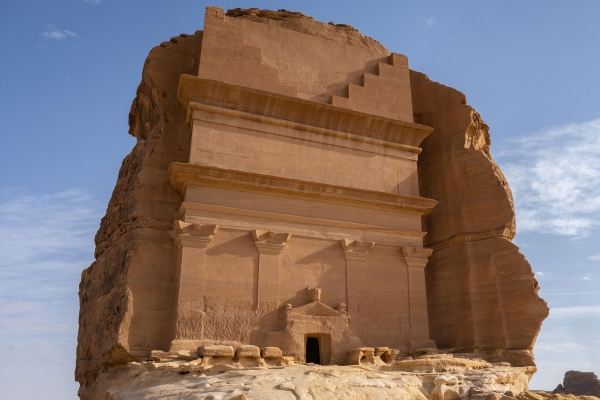
Hegra Archaeological Tombs are burial sites dating back to the Nabataean civilization, located in al-Ula Governorate in al-Madinah al-Munawwarah Province, in the northwest of the Kingdom of Saudi Arabia. These tombs are key historical sites in the Kingdom. They feature rock-carved graves adorned with inscriptions and drawings of cultural significance. The elaborately decorated tomb façades date back to a period between the first century BCE and the first century CE.
Significance of Hegra Archaeological Site
Hegra Archaeological Site was the southern capital and second-largest city of the Nabataean Kingdom, playing a pivotal role in the kingdom's prosperity. Recent studies identify Hegra as the southernmost site of the Roman Empire. Hegra region is a site of great archaeological importance due to its strategic location on the ancient trade route connecting the southern Arabian Peninsula with the Levant, Mesopotamia, and Egypt. The site held a strategic position on the ancient trade route (Incense Road) and was inhabited by Thamud people, followed by the Nabataeans, from the first century BCE to the second century CE.
Description of Hegra Archaeological Tombs
Hegra Archaeological Tombs were constructed from large carved stones and adorned to serve as facades symbolizing the Nabataean state. Some of the tombs feature inscriptions and drawings reflecting Nabataean culture. Among those buried in the tombs is the Nabataean woman "Hinat," who passed away over two thousand years ago. Her facial features were recently reconstructed using modern technologies. The tombs also housed figures such as healers, military personnel, and leaders. Inscriptions were carved on the entrances of each tomb, along with depictions of animals symbolizing beliefs prevalent during that era. Visitors to the site can observe geological formations highlighting the sculpted nature of the mountains, erosion-created protrusions on their peaks, and the gradient of mountain colors visible behind the tombs.
According to a survey by the Saudi Commission for Tourism and National Heritage (formerly), Hegra area contains 138 archaeological tombs carved into the rock, forty-two tombs of them feature inscriptions that include the name of the tomb's owner, the reign of the king during which it was carved, and the name of the sculptor who created it.
Archaeological surveys in Hegra area identified seventeen tombs bearing the names of fourteen sculptors who worked in the region. Among them was the sculptor "Aftah," known for carving tombs distinguished by their artistic precision and intricate decorations, including artistic motifs and depictions of animals. The precision of this sculptor became evident during excavations, which revealed symmetrical and detailed carvings in every corner of the tomb.
Hegra Tombs on the World Heritage List
Due to their cultural and historical significance, the Hegra Archaeological Tombs were inscribed on the United Nations Educational, Scientific, and Cultural Organization (UNESCO) World Heritage List in 2008. They hold the distinction of being the first Saudi site to be included on the list.
Royal Commission for al-Ula and the preservation of Hegra Archaeological Site
As part of the Kingdom’s commitment to preserving its archaeological treasures, the Royal Commission for AlUla was established in 2017 to develop al-Ula Governorate in line with its historical significance. In 2023, the commission produced documentaries about the rock-carved tombs in Hegra and some bronze archaeological discoveries from the site.
The commission, in collaboration with an Italian company, launched a project in 2024 to preserve Hegra Archaeological City. The project is being carried out by scientists, experts, and technicians specializing in cultural heritage. It aims to study the causes of the deterioration of the carved tombs in Hegra and identify the most effective measures to ensure their long-term preservation. The project is planned to be completed by 2025.
Related quizzes
Related articles
